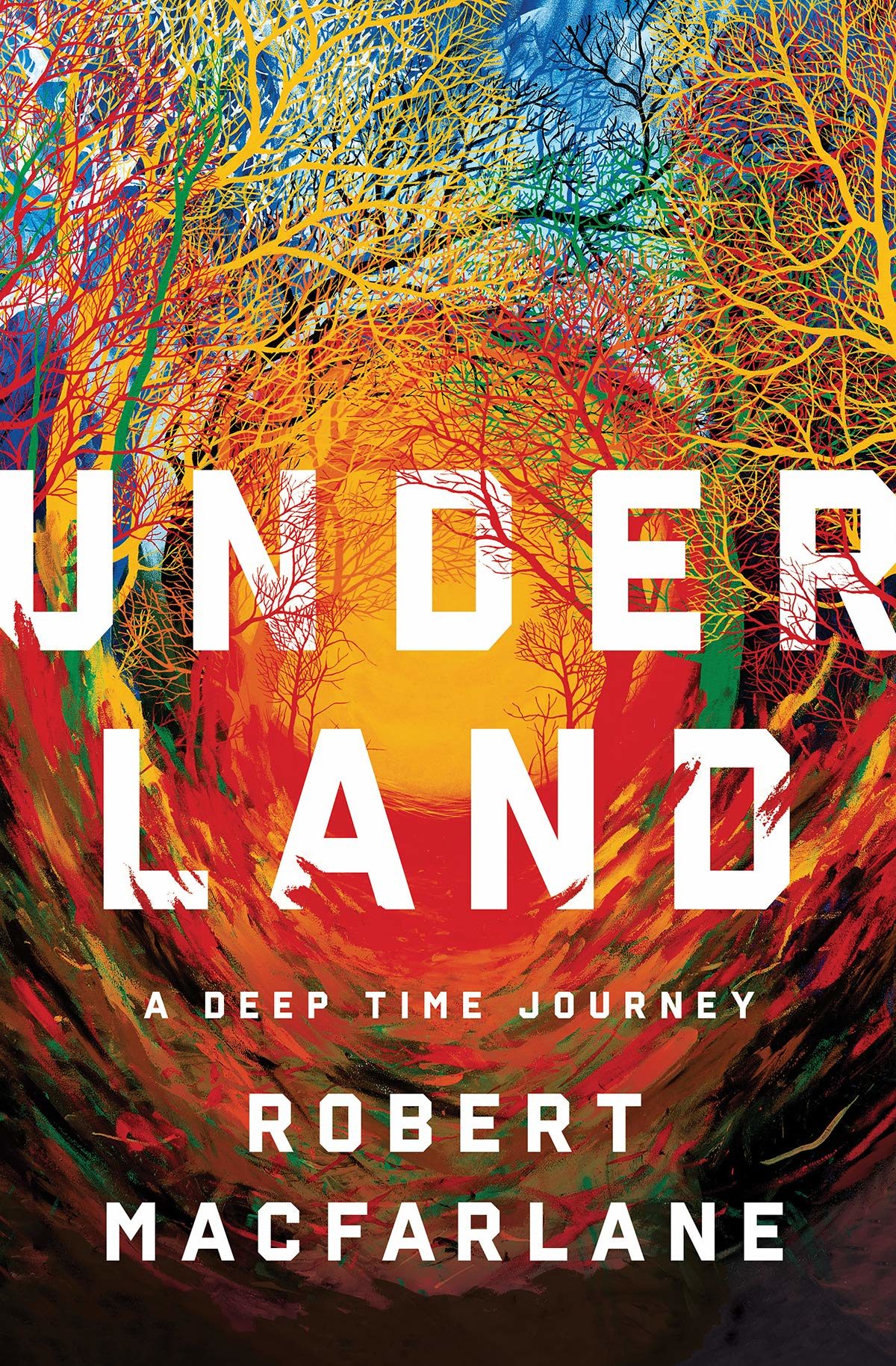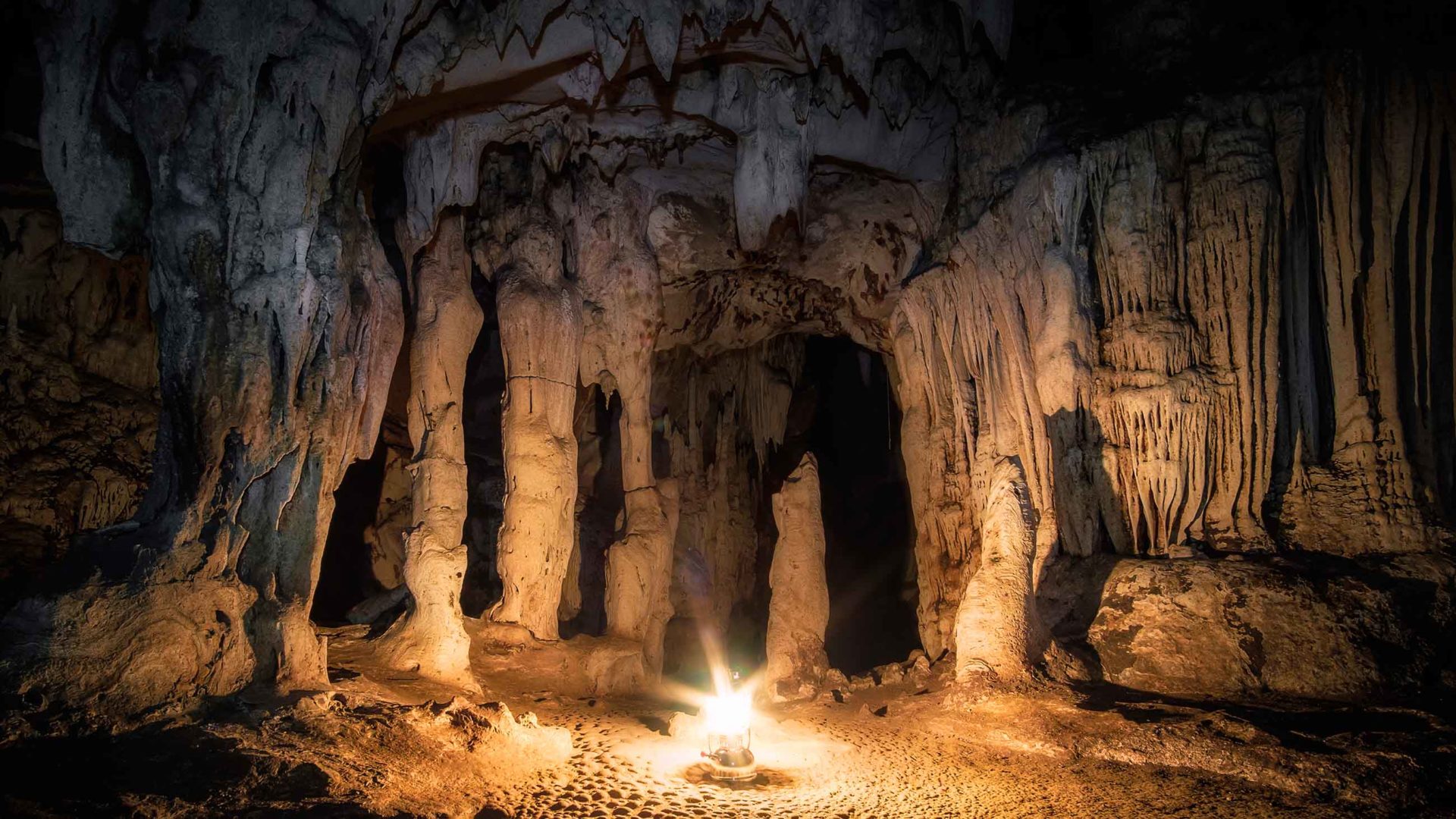In late June 2018, a dozen gangly boys from the unassuming border town of Mae Sai, Thailand, set out for what was supposed to be a brief adventure with their soccer coach to a “hidden city”— an elaborate network of limestone caves riddled beneath the nearby Doi Nang Non mountain range. But they became trapped there by the sudden onset of monsoon rains. Over the next several days, even though arguably more pressing global crises loomed, the international news media became obsessed with the tale of the boys’ disappearance, as it grew from a private crisis into a massive and successful rescue mission. The rescued soccer players became instant celebrities, and their story was broadcast by nearly every prominent television news network.

BOOK REVIEW — “Underland: A Deep Time Journey,” by Robert Macfarlane (W. W. Norton & Company, 496 pages).
Perhaps it was the thrilling escape that captivated global audiences, but British nature writer Robert Macfarlane suggests there’s another subconscious reason so many of us were fascinated by this subterranean tale. Humans are innately drawn to and repulsed by underground worlds, he writes in his newest book, “Underland: A Deep Time Journey.”
The world beneath our feet is darkly alluring and terrifying. Ancient myths are replete with stories of underworld journeys. Humans (and even our ancestors, Homo erectus) have visited caves for hundreds of thousands of years and left traces of our presence there — art, graffiti, tools, and bones.
In more recent history, we have ventured underground to retrieve valuable commodities (coal, oil, minerals) and treasure (gold, gems); buried things we hope to keep secure, from tombs to military bunkers; and entombed dark secrets below the surface, including hazardous wastes.
“Underland” is an exploration of all of these human-underground interfaces. In its pages, the author — who also has extensive experience as a caver and climber — escorts his readers into many subterranean realms via a meandering, cave-like, and masterful narrative. And though he flirts with danger, entrapment, disaster, and even death, he returns safely to the surface each time with a new insight.
The worlds he reveals are astonishing and dark. In Norway, Macfarlane views figures painted in red ocher on a cave wall 3,000 years ago, preserved and sheltered under rock, and so awe-inspiring that they move him to tears. Beneath Paris, he encounters the modern cave graffiti and underground sculptures of a subterranean counterculture, the “cataphiles,” who illicitly explore and keep watch over the city’s catacombs and sewers.
Deep in the limestone caves of northeastern Italy, he goes spelunking to a glittering, otherworldly landscape of beach dunes formed by a buried river. In the karst of neighboring Slovenia, he encounters signs of violence and extrajudicial killings during and after World War II, when Fascist militias and Communist partisans shoved their victims into caves and chasms.
In a salt and potash mine in northern England, he visits a buried lab where physicists search for dark matter, particles that humans can’t perceive but that comprise as much as 80 percent of the universe’s mass.
In each place, as in most otherworldly or underworldly myths, Macfarlane is led by one or more guides — including a bearish Norwegian man who has spent his life campaigning against deep-sea oil extraction, a salty miner who careens along labyrinthine mining roads in a Ford Transit van, a curly-haired cataphile who wears red lipstick and bright berets while spelunking beneath Paris, and a forest ecologist named Merlin who speaks about the below-ground network of fungi that connects trees to one another.
These characters take Macfarlane on adventures not just through strange terrain but backward and forward in time — or in deep time, a phrase first coined by writer John McPhee to describe geologic timescales. The underground world bears a record of geologic time trapped in sediments, peat, and ice: dust from volcanic explosions, fossils, the signatures of glacial advance and retreat, radioactive particles from atomic bomb detonations, soot from fires, and traces of past humans in the form of buried trash, ruins, and, of course, graves.
Scientists have come to know human and planetary history by digging into this record — measuring the carbon dioxide concentrations of glacial air bubbles to document past climates, reading the imprints and bones compressed in rock over millions of years. Studying the strata has allowed us to describe and name Earth’s geologic eras and understand both the evolution of life and the catastrophes that cause death and mass extinction.
Macfarlane’s journeys belowground combine discussions of such scientific phenomena with more personal and poetic musings on the ghostly traces of the past that linger in ancient caverns. Then he gestures toward transcendence, a sense of wonder at the vastness of the universe and our place in it, a kind of pantheism that echoes Annie Dillard.
This subterranean time travel leads the author to a series of surprising and disturbing thoughts about human legacy, our own future entry in the geologic record. “Weaponry tests have dispersed artificial radionuclides globally,” he writes. “Biodiversity levels are crashing worldwide as we hasten into the sixth great extinction event, while the soaring number of a small number of livestock species ensures the geological posterity in the fossil record of sheep, cows, and pigs. We have become titanic world-makers, our legacy legible for epochs to come.”
Macfarlane’s final two journeys are encounters with the vastness of human influence. On a trip to Greenland, he climbs glaciers and descends icy channels and crevasses. While there, he observes with horror the collapse of ice formations vast as cathedrals, and reflects on the immense scale of ice loss caused by climate change.
And on a visit to a future nuclear waste disposal site in Finland, he is both disquieted and hopeful about the efforts to bury toxic material and keep future generations, civilizations, and even post-human species safe. “Here the hard labor of collective decision-taking and world-making is being carried out, imperfectly but necessarily, and with a care that extends not only for a decade or a generation but far forwards into a post-human future,” he writes.
After all of these deep, dark journeys, Macfarlane returns to his readers with this lesson: Although the Earth is wondrous and vast, human influence can now be felt even in the weirdest terrains and remotest depths. In the underworld, as on the surface, we create things that are, by turns, beautiful, mystical, and horrific.
Without polemicizing, “Underland” is an invitation to be aware of the world beneath us, to marvel at the mystery and largesse of the planet, and to recognize our potential to act as heroes or villains, protectors or destroyers.
Madeline Ostrander is a freelance science journalist based in Seattle. She has written on climate change for Undark, and her work has appeared in The New Yorker, Audubon, and The Nation, among other publications.











Comments are automatically closed one year after article publication. Archived comments are below.
The game those kids play is called football. The Noth America game is called American Football. Since the USA version is played more like rugby, that ganes should be called a soccer. Fortunately, despite the fact that Americans try to change the ganes name it won’t happend, becose more people plays real football than werid American Football where u need a lot of equipment and other werid stuff, like a pitch with strange lines on it.. Real football need a ball and anything for a goal and you off. I know American propagandę machine is strong but football is a ball played with foot Not a ball carried under arms. I think that’s logic.